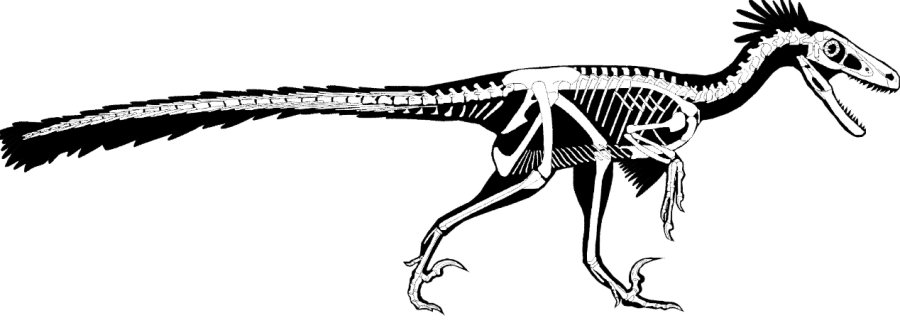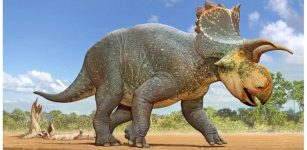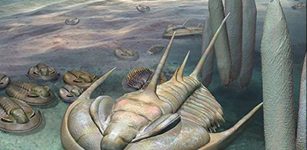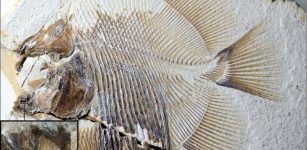New Feathered Dinosaur Lived In New Mexico 67 Million Years Ago
Eddie Gonzales Jr. – MessageToEagle.com – A new feathered dinosaur that lived in New Mexico 67 million years ago has been identified by researchers.
‘Dineobellator notohesperus’ means “Navajo warrior from the Southwest,” in honor of the people who today live in the same region where this dinosaur once dwelled.
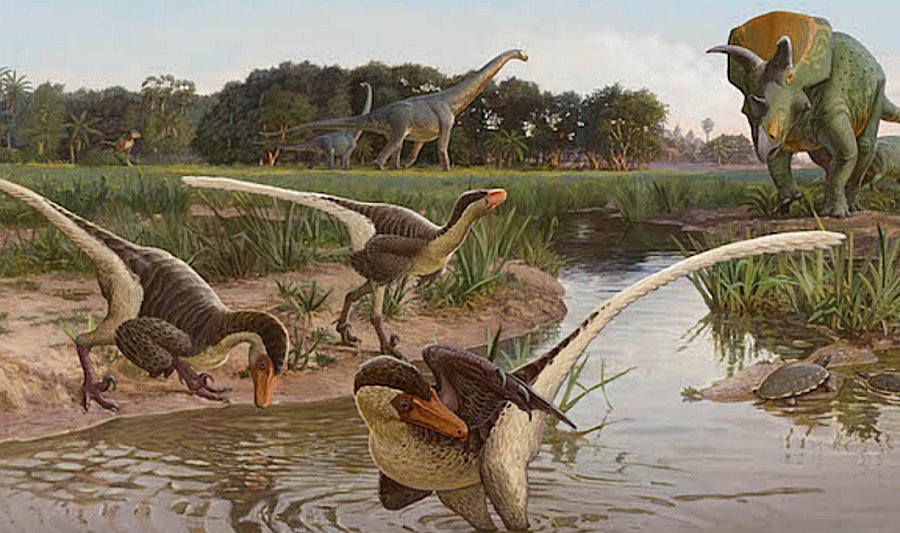 Dineobellator notohesperus is the name of a newly discovered species of dinosaur, that lived near the end of the reign of dinosaurs. Image: Sergey Krasovskiy
Dineobellator notohesperus is the name of a newly discovered species of dinosaur, that lived near the end of the reign of dinosaurs. Image: Sergey Krasovskiy
Dineobellator, as well as its Asian cousin Velociraptor, belongs to a group of dinosaurs known as the dromaeosaurids. Members of this group are commonly referred to as “raptor” dinosaurs, thanks to movies such as “Jurassic Park” and “Jurassic World.” But unlike the terrifying beasts depicted in the film, Dineobellator stood only about 3.5 feet (about 1 meter) at the hip and was 6 to 7 feet (about 2 meters) long—much smaller than its Hollywood counterparts.
Raptor dinosaurs are generally small, lightly built predators. Consequently, their remains are rare, particularly from the southwestern United States and Mexico.
“While dromaeosaurids are better known from places like the northern United States, Canada, and Asia, little is known of the group farther south in North America,” Steven Jasinski, who recently completed his Ph.D. in Penn’s Department of Earth and Environmental Sciences in the School of Arts and Sciences, led the work to describe the new species, said in a press release.
While not all of the bones of this dinosaur were recovered, bones from the forearm have quill nobs—small bumps on the surface where feathers would be anchored by ligaments—an indication that Dineobellator bore feathers in life, similar to those inferred for Velociraptor.
Features of the animal’s forelimbs, including enlarged areas of the claws, suggest this dinosaur could strongly flex its arms and hands.
This ability may have been useful for holding on to prey—using its hands for smaller animals such as birds and lizards, or perhaps its arms and feet for larger species such as other dinosaurs.
Researchers believe the dinosaur had a long, flexible tail and strong arms and hands. (Image: Steven Jasinski)
Its tail also possessed unique characteristics. While most raptors’ tails were straight and stiffened with rod-like structures, Dineobellator’s tail was rather flexible at its base, allowing the rest of the tail to remain stiff and act as a rudder.
“Think of what happens with a cat’s tail as it is running,” says Jasinski. “While the tail itself remains straight, it is also whipping around constantly as the animal is changing direction. A stiff tail that is highly mobile at its base allows for increased agility and changes in direction, and potentially aided Dineobellator in pursuing prey, especially in more open habitats.”
This new dinosaur provides a clearer picture of the biology of North American dromaeosaurid dinosaurs, especially concerning the distribution of feathers among its members.
“As we find evidence of more members possessing feathers, we believe it is likely that all the dromaeosaurids had feathers,” says Jasinski. The discovery also hints at some of the predatory habits of a group of iconic meat-eating dinosaurs that lived just before the extinction event that killed off all the dinosaurs that weren’t birds.
Jasinski plans to continue his field research in New Mexico with the hope of finding more fossils.
“It was with a lot of searching and a bit of luck that this dinosaur was found weathering out of a small hillside,” he says. “We do so much hiking and it is easy to overlook something or simply walk on the wrong side of a hill and miss something.
We hope that the more we search, the better chance we have of finding more of Dineobellator or the other dinosaurs it lived alongside.”
Written by Eddie Gonzales Jr. – MessageToEagle.com Staff

